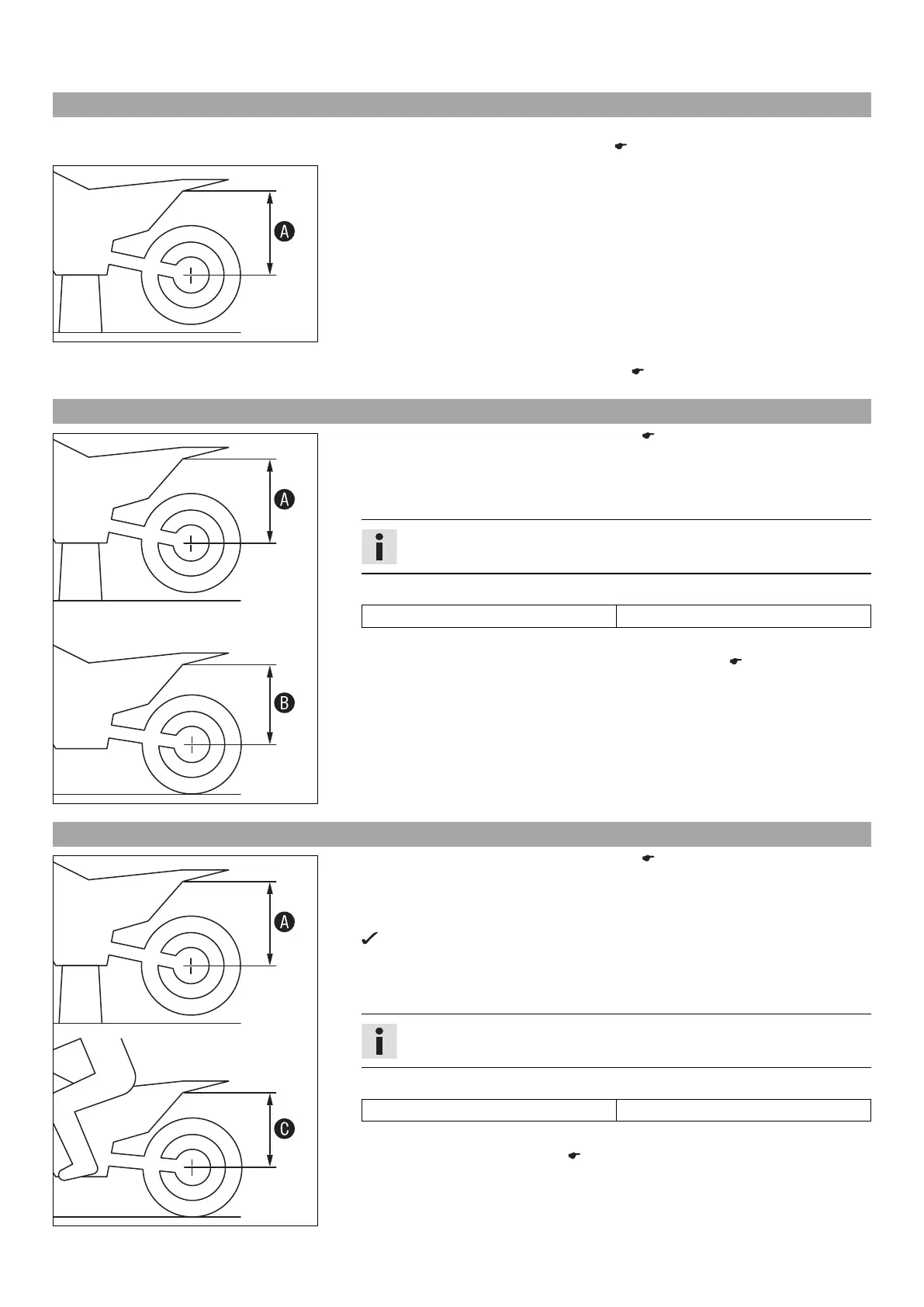10 TUNING THE CHASSIS 28
10.6 Measuring rear wheel sag unloaded
Preparatory work
– Raise the motorcycle with the lift stand. ( p. 32)
400988-10
Main work
– Measure the distance – as vertically as possible – between the rear axle and a fixed
point such as a mark on the side cover.
– Make a note of the value as dimension A.
Finishing work
– Remove the motorcycle from the lift stand. ( p. 32)
10.7 Checking the static sag of the shock absorber
400989-10
– Measure distance A of rear wheel unloaded. ( p. 28)
– Hold the motorcycle upright with the aid of an assistant.
– Measure the distance between the rear axle and the fixed point again.
– Note down the value as dimension B.
Info
The static sag is the difference between measurements A and B.
– Check the static sag.
Static sag 30 mm (1.18 in)
» If the static sag is less or more than the specified value:
–
Adjust the spring preload of the shock absorber. x ( p. 29)
10.8 Checking the riding sag of the shock absorber
400990-10
– Measure distance A of rear wheel unloaded. ( p. 28)
– With another person holding the motorcycle, the rider, wearing full protective cloth-
ing, sits on the seat in a normal sitting position (feet on footrests) and bounces up
and down a few times.
The rear wheel suspension levels out.
– Another person now measures the distance between the rear axle and the fixed
point.
– Note down the value as dimension C.
Info
The riding sag is the difference between measurements A and C.
– Check the riding sag.
Riding sag 100 mm (3.94 in)
» If the riding sag differs from the specified measurement:
–
Adjust the riding sag. x ( p. 29)

